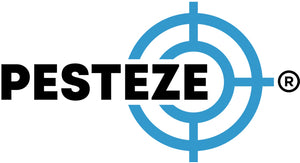SAFE RODENT CONTROL FOR PLAY AREAS

SAFE RODENT CONTROL FOR PLAY AREAS
SUMMARY
Rodents can pose a health risk in play areas, but using harsh chemicals isn't always the best solution. This guide covers safe and effective ways to keep rodents away while ensuring a clean and toxin-free environment for children. From natural deterrents to strategic landscaping, these methods will help maintain a rodent-free play space.
FEATURES
- Barrier Methods: Install mesh screens or fencing around play areas to block rodent entry.
- Natural Deterrents: Use peppermint oil, cedar mulch, or predator urine to discourage rodents without toxic chemicals.
- Proper Food Storage: Keep snacks sealed and dispose of crumbs to eliminate food sources.
- Routine Cleaning: Regularly clear debris, leaves, and clutter where rodents may nest.
- Rodent-Proof Landscaping: Trim overgrown vegetation and keep grass short to deter hiding spots.
- Child-Safe Traps: If necessary, use enclosed bait stations or humane traps that keep kids and pets safe.
DESCRIPTION
Keeping play areas rodent-free is essential for children’s safety, but traditional pest control methods can introduce harmful chemicals into their environment. Fortunately, there are safe and effective ways to deter rodents while keeping play spaces clean and secure.
Start by eliminating potential entry points. Installing mesh barriers or fencing around playgrounds can prevent rodents from sneaking in. Sealing small gaps in nearby sheds, fences, or play structures can further minimize their access.
Natural deterrents are a great alternative to chemical-based repellents. Peppermint oil, when applied to cotton balls and placed strategically around the play area, emits a strong scent that rodents dislike. Cedar mulch not only enhances landscaping but also repels pests. For additional protection, predator urine—such as from foxes or coyotes—can create an invisible barrier that discourages rodents from coming near.
Food sources attract rodents, so maintaining cleanliness is key. Ensure that any snacks eaten in the play area are properly stored in sealed containers, and regularly sweep or wipe surfaces to remove crumbs. Outdoor trash bins should have tight-fitting lids to prevent rodent access.
Rodents thrive in cluttered, overgrown environments. Keep the play area well-maintained by trimming overgrown bushes, cutting grass regularly, and removing leaves, woodpiles, or any potential nesting sites. This reduces the shelter options that make the area attractive to rodents.
If rodents persist, opt for child-safe traps rather than toxic baits. Enclosed bait stations or humane traps can be strategically placed outside the play zone to capture rodents without endangering children or pets. Avoid using glue traps or snap traps in areas accessible to kids, as they pose injury risks.
By implementing these methods, you can create a fun, rodent-free play area without relying on harmful chemicals. A proactive approach ensures that children can enjoy their space safely while keeping unwanted pests at bay.
- Maanas Mehta


Comments 0